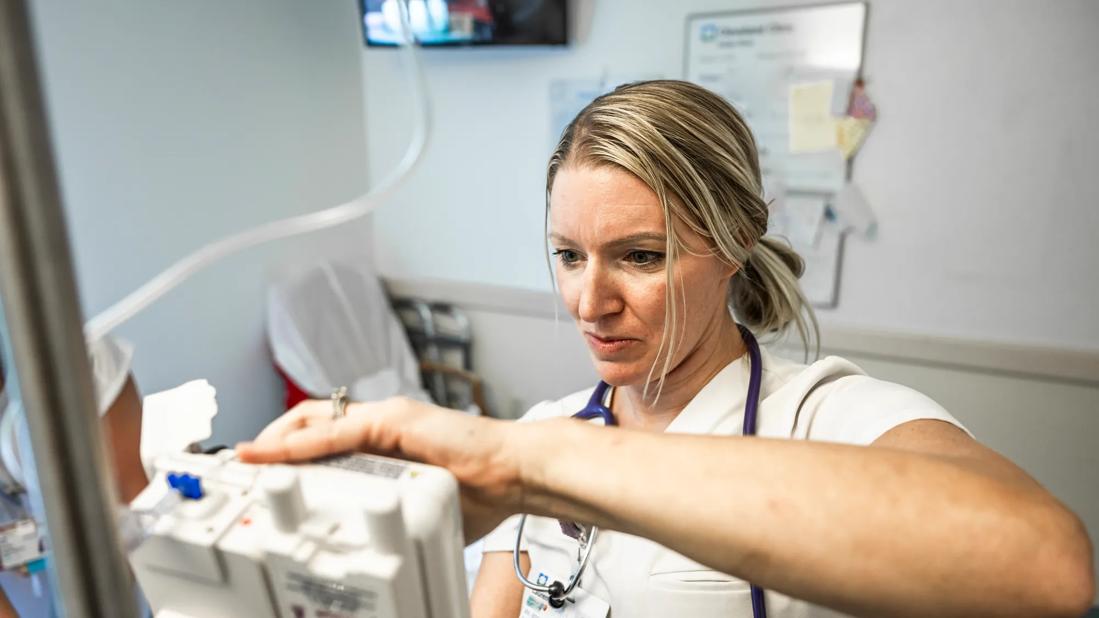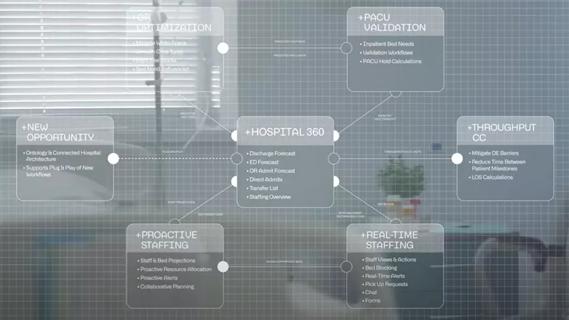Unit-based project decreases non-urgent alarms

Cleveland Clinic’s Central Monitoring Unit (CMU) provides around-the-clock cardiac telemetry monitoring for non-critically ill patients, enabling advanced detection of the changes associated with patient decompensation. In 2020, the CMU received an average of 79,080 notifications per month. Although these safety alerts are designed to capture urgent caregiver attention, their frequency can lead to a phenomenon called alarm fatigue, which arises when caregivers become desensitized to the consistent stream of electronic beeps, dings and chimes.
Advertisement
Cleveland Clinic is a non-profit academic medical center. Advertising on our site helps support our mission. We do not endorse non-Cleveland Clinic products or services. Policy
“Alarm fatigue is a persistent challenge, despite national attention and efforts to reduce the problem,” says Patrick Griffith, BSN, RN, CMSRN, Interim Nurse Manager of an Internal Medicine/Telemetry unit at Cleveland Clinic’s Main Campus. “The safe use of alarms is critical, which is evident in the theme’s continued inclusion as a Joint Commission National Patient Safety Goal for over two decades.”
In late 2022, unit leadership from one of the four internal medicine/telemetry units on Main Campus noticed a steady increase in CMU notifications. To prevent the dangers associated with alarm fatigue, the unit-based Shared Governance Council launched a project designed to decrease the number of non-urgent alerts the unit’s nurses were receiving.
“We wanted to implement a quality improvement project aimed at reducing alarm fatigue for our nurses, using proactive alarm management and preventing lapses in 24-hour continuous cardiac monitoring,” says Joseph Acord, RN, CMSRN, a clinical nurse on the 36 -bed internal medicine/telemetry unit.
Acord and Griffith, who lead the unit’s Shared Governance Council, spearheaded the “Answer the Alarm, Cause No Harm” quality improvement project, focused on four primary areas: data collection, policy adherence, education and proper delegation.
The project began with pre-intervention data collection to establish a baseline trend for CMU notifications. During the first quarter of 2023, the internal medicine/telemetry unit averaged 1,039 notifications per month – much higher than calls on similar medical-surgical units at Main Campus.
Advertisement
Armed with that information, members of the Shared Governance Council and unit leadership adopted the following strategies to reduce alarm notifications from April through June:
“Education was an important intervention throughout the project, as was our ability to monitor monthly data trends from the CMU,” says Acord. “These measures helped ensure that everybody was on the same page; the team understood their responsibilities and knew what to do to reduce non-urgent alarm notifications.”
Advertisement
Post-intervention CMU notifications to the internal medicine/telemetry unit decreased to an average of 820 per month in the third quarter of 2023 – 21% fewer notifications than the first quarter.
Acord and Griffith presented a poster on the “Answer the Alarm, Cause No Harm” project at the 2024 Academy of Medical-Surgical Nurses’ Annual Convention in Toronto. They encouraged attendees to partner with central monitoring units, nurse leaders, nurse educators and patient care nursing assistants to tackle the problem of alarm fatigue.
Acord and Griffith attributed the project’s success to the multidisciplinary approach and team-based culture at Cleveland Clinic.
“If there’s a problem, we have many avenues – shared governance and multiple committees – to voice our concerns,” says Griffith. “There are always resources to help guide caregivers in creating new processes that drive practice change.”
Advertisement
Advertisement

Digital “tripwires” detect and respond to malicious activity, boosting cybersecurity maturity

Thoughtful collaboration, data-driven decisions and effective change management lead to significant savings

Clinical input is integral to technology implementation and adoption strategy

Integrating technology is more than product delivery

Cleveland Clinic partners with Palantir to create logistical command center

Cleveland Clinic’s roadmap to recovering critical digital assets stems from strategic planning and preparedness

The Friends of Cybersecurity program bridges innovative technology solutions with mitigating security risks

Cleveland Clinic’s Information Technology Apprenticeship Program expands skill set while leading to meaningful employment